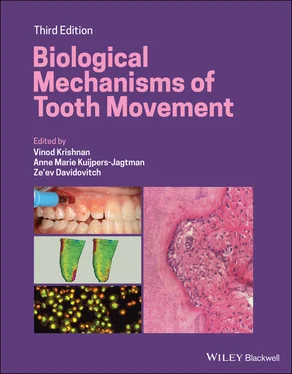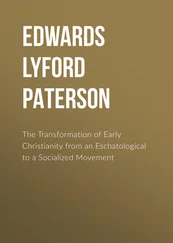Inflammation is usually defined as a complex biological response to harmful stimuli aimed to protect or to restore the homeostasis of a given organism. Considering that the inflammatory process is generally associated with infectious conditions, the term aseptic (or sterile) inflammation was created to describe specifically the responses generated by trauma, damaged cells, or irritants in the absence of any microorganisms. Indeed, the recent discovery of the DAMPs system rejuvenated the concept of aseptic inflammation, which has gained increasing attention from the scientific community in recent times (Chen and Nunez, 2010; McDonald et al ., 2010). The DAMPs comprise a series of endogenous molecules (previously called “danger patterns,” “alarmins,” or “endokines”) released upon cellular stress, injury, or tissue damage and are capable of triggering an inflammatory response and mediate tissue repair (Chen and Nunez, 2010). DAMPs’ effects are mediated by their binding to pattern recognition receptors (PRRs), such as the TLRs or NLRs. While the PRRs were originally identified as responsible for the microbial detection, the discovery of DAMPs/PRRs binding provided a key molecular basis to understand the trigger behind aseptic inflammatory response (Chen and Nunez, 2010; McDonald et al ., 2010).
As examples among DAMPS studied so far, HMGB1 (high mobility group box 1) and HSPs (heat shock proteins) have been identified in tissues after orthodontic force stimulation. HMGB1 is a protein present in the nucleus of all mammalian cells, responsible for structural and transcriptional activities, but HMGB1 is released upon cellular stress/damage by almost all nucleated cells (Goodwin and Johns, 1977; Bonaldi et al ., 2002). It was recently demonstrated that HMGB1 is released by PDL fibroblasts in vivo during orthodontic movement (Wolf et al ., 2013). Once secreted, HMGB1 can trigger the production of inflammatory and osteoclastogenic cytokines by PDL cells (Kim et al ., 2010), and mediate their proliferation and migration (Chitanuwat et al ., 2013). In addition to HMGB1, the HSPs comprise another class of DAMPS, possibly related to inflammation associated with the OTM. It was demonstrated that HSPA1A and HSPB1 are upregulated in PDL at an early stage of tooth movement (Arai et al ., 2010; Baba et al ., 2011). Like HMGB1, HSPs can act as a trigger for inflammatory reaction to orthodontic forces during the early stages of tooth movement. Accordingly, unpublished data from our group (Garlet laboratory) demonstrate that HMGB1 and HSP levels are upregulated even before the increase in first‐messengers expression (i.e., IL1beta and TNF‐alpha), reinforcing its potential role as trigger of the inflammatory reaction. Accordingly, recent studies demonstrate that the application of orthodontic forces upregulates HMGB1 expression in rat periodontal tissue in a time‐ and force‐dependent manner ( Wolf et al ., 2014a, b; Zou et al ., 2019). It is also important to mention that both HMGB1 and HSPs are produced in response to hypoxia (Oettgen, 1990; Hendrick and Hartl, 1993), a condition characteristically present in the PDL area during orthodontic movement. Therefore, DAMPs are potentially the trigger of the inflammatory reaction in response to orthodontic forces, as well in the subsequent reparative events that lead to tissue remodeling. It is also important to consider that DAMPs can act as triggers and regulators of inflammatory response. Recent studies demonstrate that HSP production by PDL cells, triggered by mechanical loading, can dampen the subsequent inflammatory response, suggesting the existence of auto‐regulatory mechanisms that limits the inflammatory process (Marciniak et al ., 2019; Wolf et al ., 2016). Importantly, DAMPs (such as HMGB1) can also exert direct anabolic effects on PDL cells, suggesting that its involvement in OTM can be extended beyond its proinflammatory properties (Wolf et al ., 2014a, b).
Prostaglandins (PGs), products of arachidonic acid metabolism, are local, hormone‐like chemical agents produced by mammalian cells including osteoblasts that are synthesized within seconds following cell injury. One of the derivatives of the arachidonic acid cascade, PGE 2, acts as a vasodilator by causing increases in vascular permeability and chemotactic properties, and also stimulates the formation of osteoclasts and an increase in bone resorption. The cyclooxygenase (COX) family of enzymes consists of two proteins that convert arachidonic acid, a 20‐carbon polyunsaturated fatty acid comprising a portion of the plasma membrane phospholipids of most cells, to PGs. The constitutive isoform (COX‐1) is found in nearly all tissues and is tissue protective. In contrast, COX‐2, the inducible isoform of COX, appears to be limited in basal conditions within most tissues, while de novo synthesis is activated by cytokines, bacterial lipopolysaccharides, or growth factors, to produce PGs in large quantities in inflammatory processes. There are several lines of evidence showing that COX is also closely associated with periodontitis, and that PGs are mediators of gingival inflammation and alveolar bone resorption (Offenbacher et al ., 1993).
With the help of in vivo studies, an injection of biochemical agents such as PG has been suggested as one effective method that significantly increases OTM (Yamasaki et al ., 1980; Yamasaki, 1983). The mechanism of action of PGE 2can be explained by the pressure–tension theory of tooth movement, which assumes chemical signals to be cell stimulants that lead to tooth movement (Rygh, 1989). According to this theory, pressure causes changes in the PDL blood circulation and the resultant release of chemical mediators. Inflammatory mediators may act in concert and produce synergistic potentiation of prostanoid formation in cells of the human PDL (Ransjo et al ., 1998). There is evidence that PG is released when cells are mechanically deformed (Rodan et al ., 1975). Indeed, in vitro studies have shown that the expression and production of PGE 2is promoted by mechanical stimulation of the PDL (Yamaguchi et al ., 1994). COX‐2 is induced in PDL cells by cyclic mechanical stimulation and is responsible for the augmentation of PGE 2production in vitro (Shimizu et al ., 1998). Furthermore, PGE 2plays an important role as a mediator of bone remodeling under mechanical forces (Yamasaki et al ., 1982). Saito et al . (1991) reported that there is a local increase in PGs in the PDL and alveolar bone during orthodontic treatment, while other studies have demonstrated an arrest in tooth movement in experimental animals when nonsteroidal anti‐inflammatory drugs were administered (Chumbley and Tuncay, 1986). Indomethacin, a specific inhibitor of prostaglandin synthesis, reduced the rate of OTM (Yamasaki et al ., 1980). Further, when PGE 1was administered locally or systemically to rats as an adjunct to orthodontic force, accelerated bone resorption and tooth movement were observed (Yamasaki et al ., 1984).
Interestingly, HMGB1 can trigger PG synthesis (Leclerc et al ., 2013), suggesting that an inducer‐first messenger (PG) cascade can take place in the development of an inflammatory reaction to orthodontic forces. Also, DAMP‐induced PG can modulate cytokines, demonstrating the existence of complex regulatory networks involving different classes of mediators in the response to orthodontic forces (Prockop and Oh, 2012). Therefore, it may be concluded that PGs play an important role in OTM.
The second‐messenger system
According to Krishnan and Davidovitch (2006a), while paradental tissues become progressively strained by applied forces, their cells are continuously subjected to other first messengers, derived from cells of the immune and nervous systems. The binding of these signal molecules to cell membrane receptors leads to enzymatic conversion of cytoplasmic ATP and GTP into adenosine 3´,5´‐monophosphate (cyclic AMP [cAMP]), and guanosine 3´,5´‐monophosphate (cyclic GMP [cGMP]), respectively. These latter molecules are known as intracellular second messengers. Immunohistochemical staining during OTM in cats showed high concentrations of these molecules in the strained paradental tissues (Davidovitch et al ., 1988).
Читать дальше












